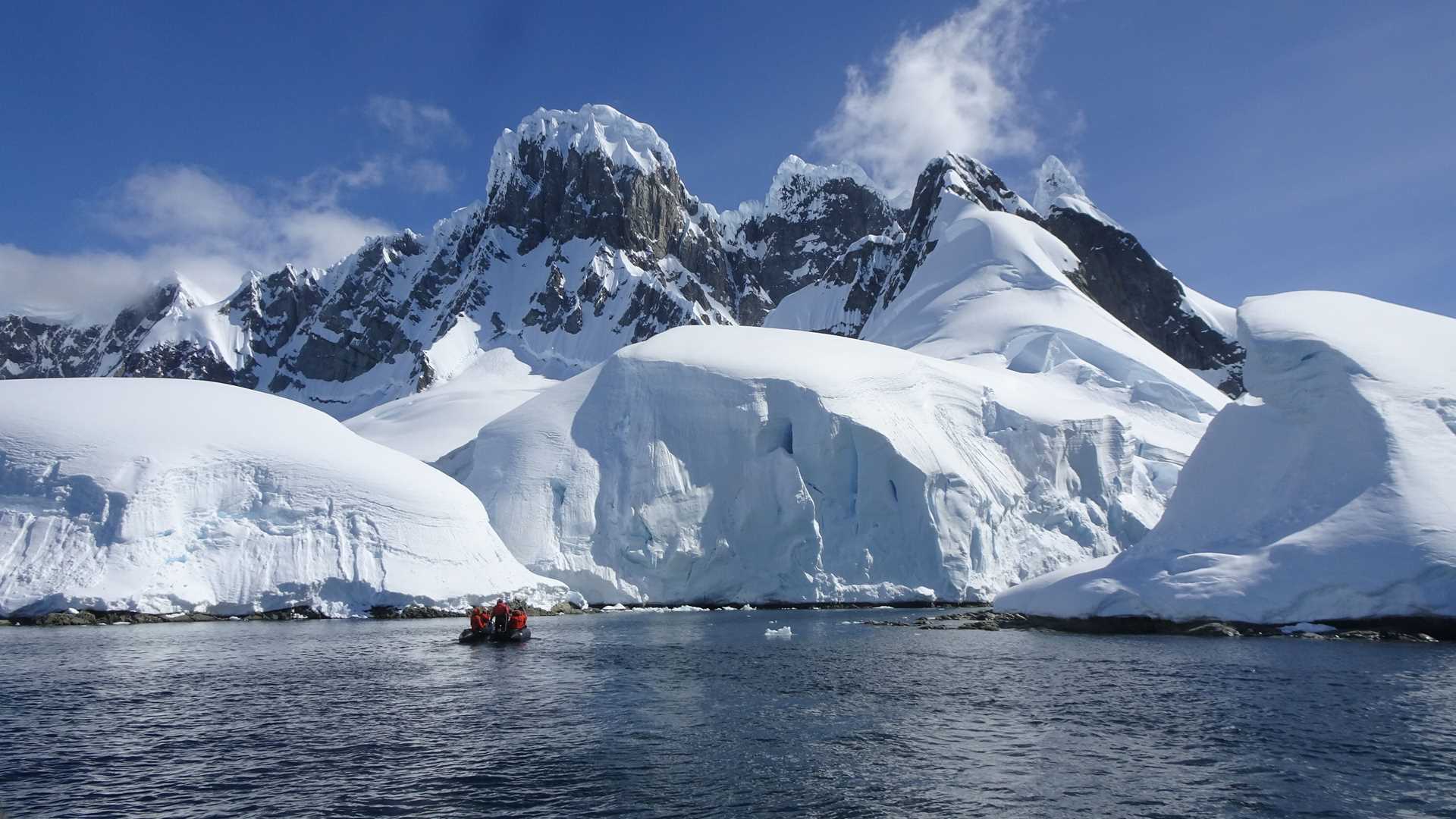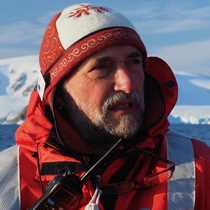Before breakfast and from the north, our ship approached the famous Lemaire Channel. The narrow channel is ornamented with magnificent black cliffs on both sides. The cliffs stick out of a steep glacier belt at low elevations. The clifftops were hidden by overcast clouds. The channel is so narrow that a large iceberg could completely block the passage. Luckily, all icebergs within the channel were small or medium-sized, and National Geographic Endurance made it through. At the southern exit of the channel, we spotted Pleneau Island, our destination for the morning landing. A shallow sea near the island trapped hundreds of icebergs driven by wind and currents until they were grounded. Two of them were especially remarkable. One was in the shape of a bridge. An opening in the iceberg was decorated with huge icicles. From one side, guests on the Zodiac cruise could take an ice-framed photo of our ship. The second massive iceberg had an enormous cave that was carved by ocean waves. The cave was about 30 meters high at the entrance and about 50 meters deep. A landing at the island and Zodiac cruises were offered to guests. Pleneau Island is home to about 3,000 pairs of nesting gentoo penguins. The island is almost completely covered by ice and snow except for multiple small, smooth rock outcrops that protrude through the snow. These clear openings were used by nesting birds.
The sky cleared after lunch. We sailed through the Lemaire Channel again in the opposite direction. The ship repositioned to nearby Hidden Bay, where we had two afternoon rounds of Zodiac cruising. The bay was surrounded by spectacular peaks and sparkling glaciers. Guests enjoyed the Zodiac cruises and a very interesting presentation about science experiments in the Southern Ocean.
Before dinner, National Geographic Endurance set its course for Ushuaia across the Drake Passage.







